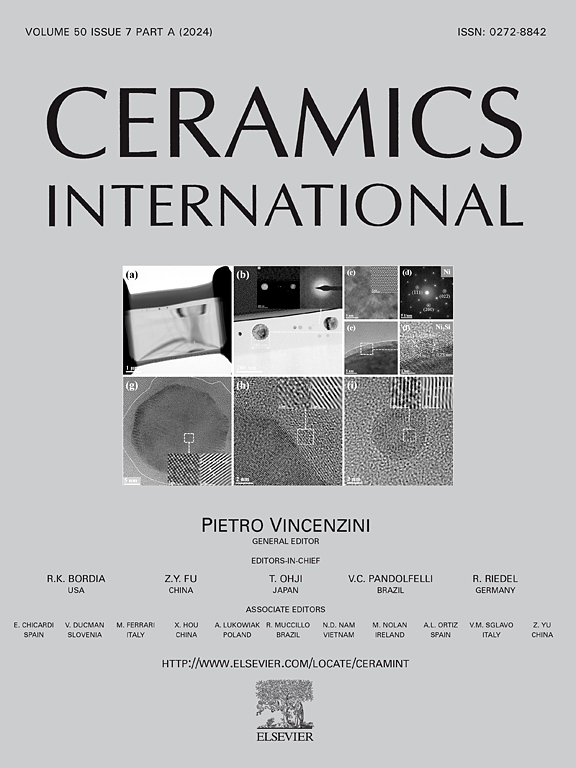Analysis of microsturcture evolution and mechanical properties in zirconia ceramic joints brazed by bismuth based glass
IF 5.1
2区 材料科学
Q1 MATERIALS SCIENCE, CERAMICS
引用次数: 0
Abstract
The ZrO2 ceramics was successfully brazed by the newly designed bismuth-borate glass. The mechanism which is influenced by holding time and cooling rate on morphology and mechanical performance of joints were thoroughly analyzed under 675 °C. The study introduced an innovative bismuth-borate glass composition as the brazing material, providing an effective solution for high-strength joint formation in ZrO2 ceramics. The findings showed that when brazing temperature was 675 °C, well-formed joints were obtained under 0–90 min and cooling rate range of air cooling or slower, whiskers of Al4B2O9 and crystals of Al5BO9 were observed in the joints, with their number and size increasing as the holding time extended and the cooling rate decreased. Systematic analysis demonstrated that the optimized process parameters, including a holding time of 30 min and a controlled cooling rate of 3 °C/min, resulted in a maximum shear strength of 83 MPa. The joint formed under these conditions was a reinforced composite consisting of aluminum borate crystals. The joint of ZrO2 ceramics brazed with Bismuth oxide-Boron oxide-Aluminium oxide (50Bi2O3-45B2O3-5Al2O3) glass is the reinforced composite joint consisting of aluminum borate crystals.
求助全文
约1分钟内获得全文
求助全文
来源期刊

Ceramics International
工程技术-材料科学:硅酸盐
CiteScore
9.40
自引率
15.40%
发文量
4558
审稿时长
25 days
期刊介绍:
Ceramics International covers the science of advanced ceramic materials. The journal encourages contributions that demonstrate how an understanding of the basic chemical and physical phenomena may direct materials design and stimulate ideas for new or improved processing techniques, in order to obtain materials with desired structural features and properties.
Ceramics International covers oxide and non-oxide ceramics, functional glasses, glass ceramics, amorphous inorganic non-metallic materials (and their combinations with metal and organic materials), in the form of particulates, dense or porous bodies, thin/thick films and laminated, graded and composite structures. Process related topics such as ceramic-ceramic joints or joining ceramics with dissimilar materials, as well as surface finishing and conditioning are also covered. Besides traditional processing techniques, manufacturing routes of interest include innovative procedures benefiting from externally applied stresses, electromagnetic fields and energetic beams, as well as top-down and self-assembly nanotechnology approaches. In addition, the journal welcomes submissions on bio-inspired and bio-enabled materials designs, experimentally validated multi scale modelling and simulation for materials design, and the use of the most advanced chemical and physical characterization techniques of structure, properties and behaviour.
Technologically relevant low-dimensional systems are a particular focus of Ceramics International. These include 0, 1 and 2-D nanomaterials (also covering CNTs, graphene and related materials, and diamond-like carbons), their nanocomposites, as well as nano-hybrids and hierarchical multifunctional nanostructures that might integrate molecular, biological and electronic components.
 求助内容:
求助内容: 应助结果提醒方式:
应助结果提醒方式:


